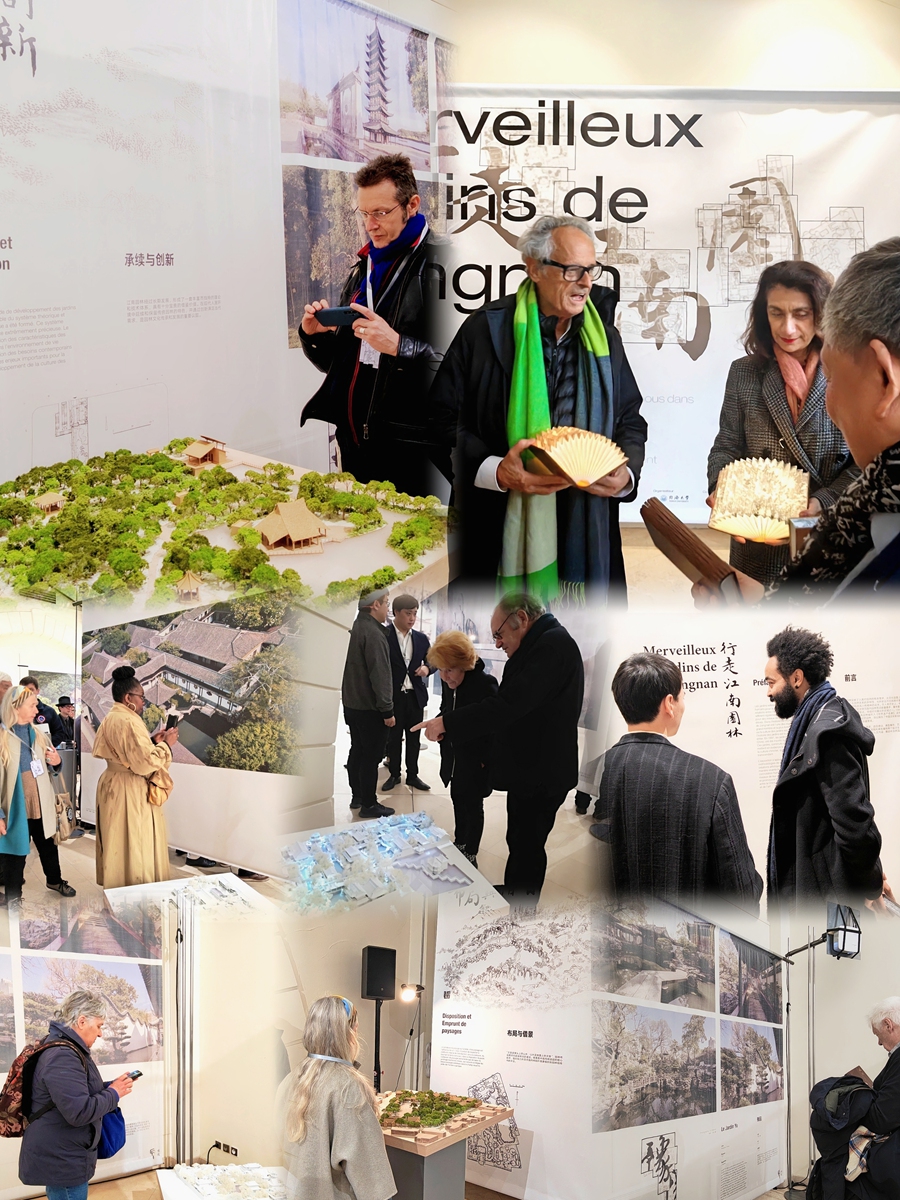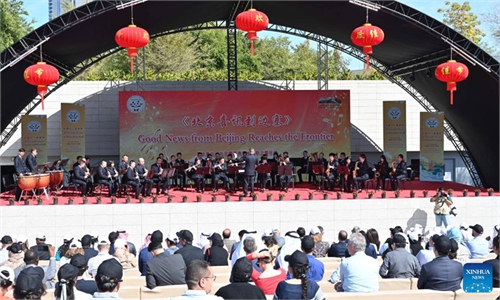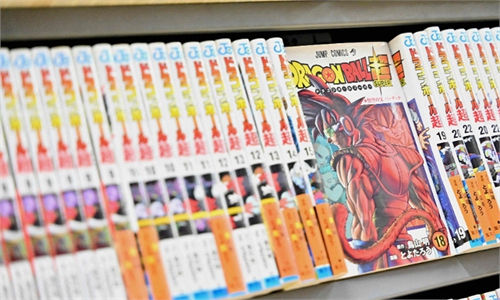ARTS / CULTURE & LEISURE
French visitors tour 'Wonderful Gardens in Jiangnan' from China in Versailles

Photo: Courtesy of Wonderful Gardens in Jiangnan
As one of the countries with the longest history of garden art, China has played a very important role in the global history of gardens. Gardens in the regions south of the lower reaches of the Yangtze River in China, or Jiangnan, are the profound artistic conception of Chinese culture and wisdom while showcasing natural beauty.
A new exhibition at the Carré à la Farine in Versailles is giving French visitors a better understanding of Chinese gardens and how they draw on the beauty of nature and add an artistic touch to it through the unique depth and artistic lens of Chinese culture.
The exhibition, running from Wednesday to Sunday, is part of the Our Water: From Shanghai-Intercultural Dialogues Between Global Cities event hosted by the Shanghai Municipal People's Government to mark the 60th anniversary of diplomatic ties between China and France and the China-France Year of Culture and Tourism in 2024.
Curated by professor Zhang Ming from Tongji University and Li Dandan, president of the Pearl Art Museum in Shanghai, the Wonderful Gardens in Jiangnan exhibition comprises two sections. According to the two curators, the first section, "Garden Scenery," uses history, gardening theory and traditional skills as narrative clues to introduce five Chinese gardens: the Yuyuan Garden and the Fangta Garden in Shanghai, Master-of-Nets Garden in Suzhou, the Jichang Garden in Wuxi, and Heyuan Garden in Yangzhou.
Four artists Ru Xiaofan, Zhang Xiaoli, Zhou Yang and Yuan Long worked together to create multimedia artworks to contribute to the second section, "Garden Landscape."
Students from Tongji University and performers from the Shanghai Kunqu Opera Troupe collaborated to present a selection of scenes from the Kunqu Opera The Peony Pavilion at the opening.
"I have never seen such charming Chinese garden art. The sound of the flute reminds me of our China trip 17 years ago. I traveled from Paris for the exhibition after learning about it. It is a wonderful experience," said one of the visitors on Wednesday.
For the curators, telling a story about China's gardens in the Jiangnan region through an exhibition space of just over 200 square meters was a challenge.
Through a careful selection process, they chose the five gardens as they vividly express the history of Chinese gardens that spans thousands of years and continues to this day.
To present a three-dimensional "Jiangnan Garden Scene" to Western audiences within a macro-scale time and space framework, they created multiple exhibits for the exhibition. One of them is the Thousand Gardens in the South of the Yangtze River. For this display, the creators compiled nearly 2,000 gardens located in more than 50 towns south of the Yangtze River from historical documents and presented them in the same space through cartographic techniques.
Besides this, the Our Water: From Shanghai-Intercultural Dialogues Between Global Cities event aims to boost exchanges and development between cities by creating a "dialogue between rivers," starting with the Suzhou River in Shanghai and the Seine in Paris, through a series of cultural events.




